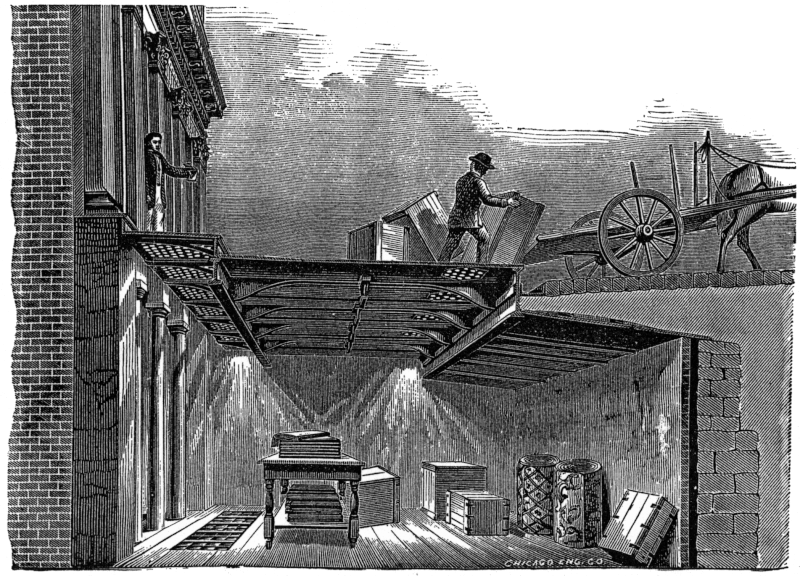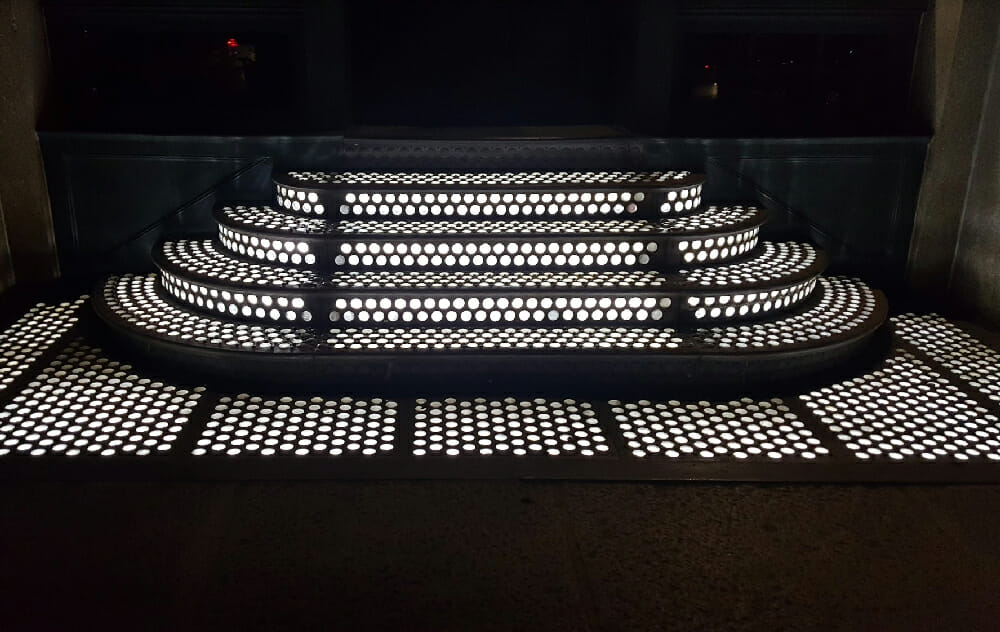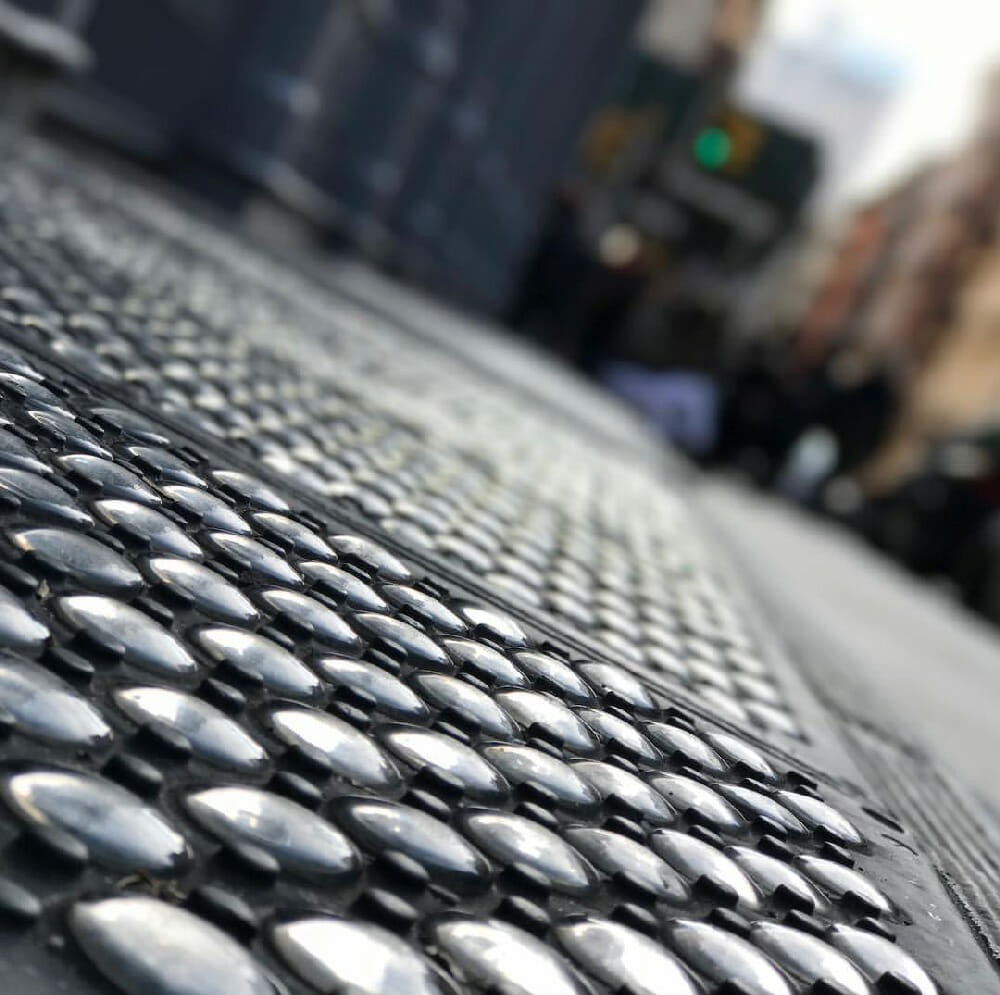Vault Lights
The History of Sidewalk Pavement Lights
Prior to their use in city sidewalks, vault lights first appeared in 1845 as a way to provide light below deck on ships. Invented by Thaddeus Hyatt, they reduced the use of open-flame lighting that had the potential to create treacherous problems on old wooden ships. A brilliant way to light lower levels, their application spread to sidewalks in order to bring natural lighting to subterranean rooms, storage, apartments, and basements below.
From 1860 until the widespread use of electricity in the 1930s, vault lights were used across the country to convert dark spaces into usable rooms by bringing in daylight. The first design of vault lights featured a prism shape to maximize the spread of light into the room below. Multiple prisms were configured to cover wider areas and mounted into cast-iron panels and concrete.

Engraving of Thaddeus Hyatt’s 1867 Patent Basement Extension Illuminating a Sidewalk Vault
Function and Style
Then and now, vault lights serve both functional and aesthetic purposes that contribute to the illumination of underground spaces while enhancing the visual appeal of sidewalks. Let’s explore the shape and color of historical and contemporary vault lights based on the provided references:
Historical Vault Lights’ Influence on Modern Counterparts
Historical vault lights often featured traditional designs, including geometric patterns and iron or metal frames. The glass prisms were commonly square or rectangular in shape, and their color was usually clear or slightly tinted to maximize the amount of light that could reach underground spaces. Interestingly, the preserved vault lights of the late 1800s and early 1900s that can still be found in some cities have turned beautiful shades of purple, pink, and gold.
Why? Glass manufacturers of the era mixed manganese dioxide, also known as “glassmakers’ soap” into their glass. Its purpose was to stabilize the glass and take away the greenish tint produced by other elements. However, as the manganese in the glass was exposed to ultraviolet rays over the decades, the prisms took on the straw-colored and purple-pink hues.
Vault lights from this period were not known for vibrant or bold colors or creative shapes. Still, they contributed greatly to the architectural aesthetics of the urban landscape with their combination of luminous glass and handsome cast iron that provides a functional and visually appealing solution for illuminating underground spaces.
Modern vault lights also complement contemporary urban aesthetics and incorporate more diverse materials than their predecessors. Frames come in concrete and metals other than cast iron, as well as colored coatings. The glass itself is more durable than it was more than a century ago, and the shape, size, and color choices are virtually limitless.
While historical vault lights tended to have simpler and more traditional designs, contemporary vault lights embrace a wider range of shapes and colors, reflecting modern architectural and design trends. The materials used, such as glass or acrylic, also contribute to the overall appearance of these elements in urban landscapes.
Vault Lights: The Essentials
Vault lights, also known as sidewalk vault lights, sidewalk prisms or pavement lights, are architectural elements designed to allow natural light into subterranean spaces, such as basements or underground tunnels or other dark spaces. These lights are typically set into the pavement or sidewalk and serve to transmit daylight into the spaces below.
Vault Lights: Key Characteristics
- Glass: Vault lights are traditionally made of glass or other transparent materials, providing a durable and weather-resistant surface for pedestrian traffic.
- Structure: Vault lights can be set directly into the pavement, or, more commonly, into a large panel, which is then set into the pavement. Either way, sidewalk vault lights become an integrated part of the sidewalk or pathway. This placement ensures that natural light can penetrate the space beneath.
- Prismatic shape: Many vault lights have a prismatic or textured surface that disperses sunlight, reducing glare and creating a diffused illumination below ground.
- Historical significance: Vault lights have historical significance, dating to the late 19th and early 20th centuries to address the need for light in basements in urban environments in the pre-electric era.
- Architectural aesthetics: In addition to their functional purpose, vault lights can be designed in various shapes and patterns, contributing to the architectural aesthetics of sidewalks and streets.
While vault lights were historically prevalent, modern urban design and changes in construction practices have led to variations in their usage. In some areas, vault lights are preserved or replaced for historical or architectural significance, while in others, contemporary sidewalk vault lights are used to recycle daylight to underground areas such as train stations.
The Vault Light Evolution
Today, we see a resurgence in the use of vault lights as the benefit and sustainability of natural light is embraced by architects and designers.
The design and materials have all evolved to improve durability. These modern vault lights also feature a larger surface area, which aids in increasing the transfer of light. The early sidewalk prisms have been replaced by circular bullet glass and square vault lights. During the day, natural light shines in, creating warmth. At night, the lighted sidewalk vault creates a dramatic entrance and a stunning feature of modern architecture.

Puck Building New York, NY | Architect: JL Ramirez Architect PC
Vault Lights Restored & Reimagined
Innovation in materials used in structural glass applications is extending the benefit of vault lights to new applications. Structural glass can now be found in walkable skylights, glass bridges, decks, balconies, landings, risers, and stair treads.
As well as new applications, innovative architects are making the old new again through the use of the historic aesthetic of vault lights cast in composite concrete or cast iron frames, which can be used for walls and ceilings. Prefabricated panels can be custom-engineered to achieve the architect’s vision. Built to withstand structural loading requirements, the design can incorporate different glass shapes, textures, and colors. Steel, stainless steel, and cast iron pavement lights are available in a variety of finishes and colors too.

Raised Circular Sidewalk Vault Lights
Glass Bullets and Cast Iron Vault Lights from Circle Redmont®
Our 81R™ Glass Bullets and Cast Iron Vault Lights add a unique appearance anywhere they are used. Our products are so elegant, that they have been approved by the New York City Landmarks Preservation Commission as appropriate replacements for historic cast iron and glass bullet vault light fixtures. Available in a variety of sizes and thicknesses, we can also provide the thresholds, corners, and joint assemblies to make installation easier. These glass bullet and cast iron vault lights become a focal point of the design and are a perfect balance of old sophistication and modern chic.
Circle Redmont®’s Glass Pavers & Metal Systems
For projects that require maximum glass coverage as well as the highest illumination, we suggest our 91R™ Glass Pavers & Metal Systems. These glass pavers shine their brightest when used in bridges, stair treads, or in other applications where lighting every step is the desired effect. Our glass pavers and metal systems are custom designed and manufactured, so whether they are for the oval office or a simple square cityscape, we provide what is needed effectively and efficiently. Our glass can cover any area and any shape with ease.


